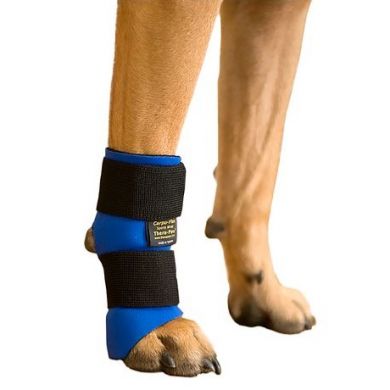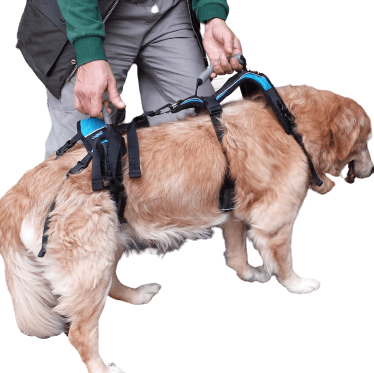防止拖腳訓練襪(後腳) Rear No-Knuckling Training Sock
The No-Knuckling Training Sock (rear) helps encourage dogs and cats to pick up their paws when knuckling, or dragging of back paws is seen. Knuckling in rear paw may occur in pets who are aging, suffering from back leg weakness, injuries or neurological diseases such as Degenerative Myelopathy (DM) and Intervertebral Disc Disease (IVDD). This is a training support sock designed for short time use only.

About Rear No-Knuckling Training Sock
The Rear No-Knuckling Training Sock helps pets who knuckle their toes over or dragging their feet, by training them to learn how to properly pick up their feet higher.
It is designed for use in clinics and for pet owners to use at home under a veterinarian or rehabilitation therapist’s advice to help retrain pets with:
- Neurological or spinal diseases such as IVDD, Degenerative Myelopathy (DM), Wobblers Syndrome, Cervical (neck) Disc Disease
- Neurological disorders causing back paw knuckling and dragging
- Senior dogs with hind leg weakness, osteoarthritis or degenerative joint disease
Features:
- Soft and light materials (neoprene) with adjustable touch fastener straps for extra support
- Re-trains pets to pick up their paws and restores a more normal gait (walk)
- Stimulates the nerve functions in between the toes to conduct a withdrawal reflex
- Corrects placing of foot to promote proprioception
- Provides support to the hock joint (ankle)
- Designed by rehabilitation therapist in United States
Can be spot cleaned by hand and air dried.
Due to hygiene reasons, we do not accept returns or exchanges of this product. Please make sure you have consulted your family veterinarian or rehabilitation therapist before purchase. Contact us for assistance.
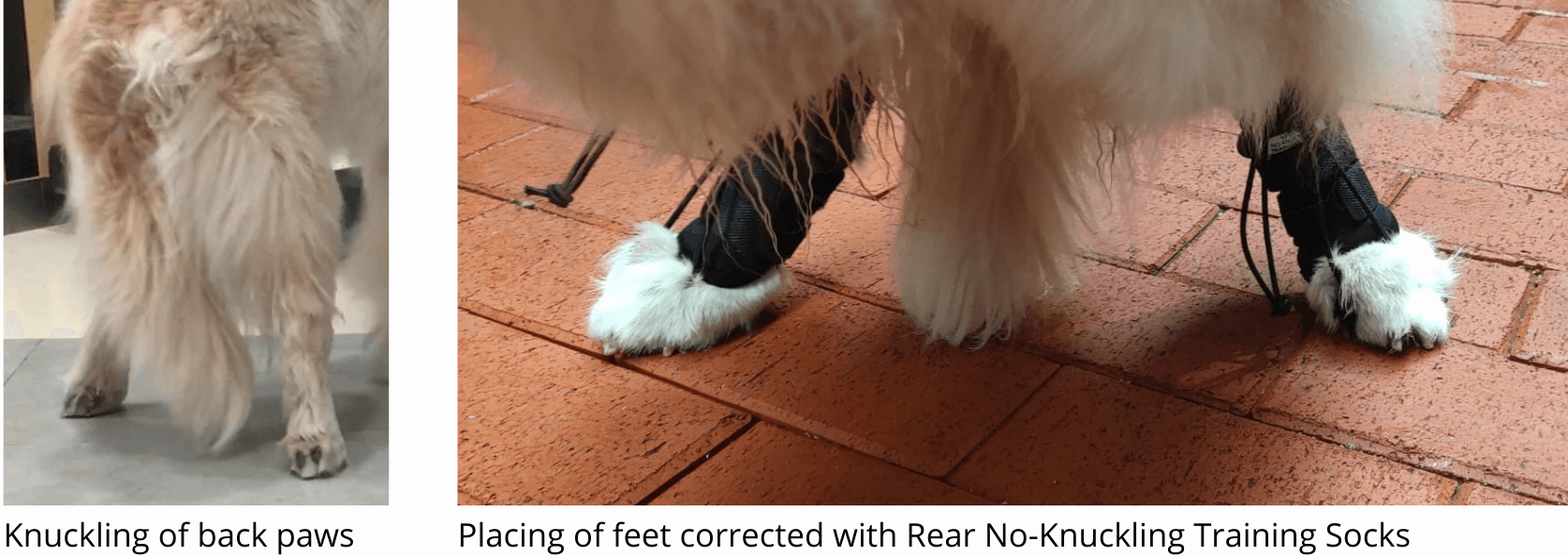
Sizing
Measure from Point A to Point B on your dog or cat while standing, utilise the size chart below to decide the size that best fits your pet.
Point A is at the center of hock joint (ankle).
Point B is right on top of the paw.
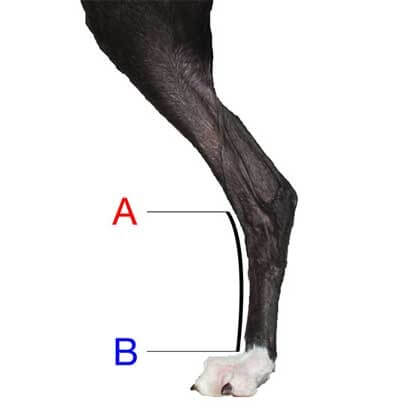
Size | Measurement from A to B | Weight |
XS | Up to 3 inch (7.5cm) | Up to 15 lbs (7kg) |
Small | Up to 4 inch (10cm) | Up to 30 lbs (14kg) |
Medium | 4 – 6 inch (10 - 15cm) | 30 – 60 lbs (14kg - 27kg) |
Large | 6 – 8 inch (15 - 20cm) | 60 – 80 lbs (27 - 36kg) |
One size up if your pet is in between 2 sizes.
How to fit
Safety and Success:
- Do not wrap the training sock too tightly, to ensure normal circulation and mobility of the leg
- Do not tighten the cord too much to pull the toes up to far or cause discomfort in your pet
- Only start training session for 2 to 5 minutes at the start of the walk. Always follow your veterinarian or rehabilitation therapists' instructions
- Keep the softest part of the fleece pad touching your pet's skin. The touch fastener edge should point away from the pet's paw
- Do not leave the training sock on your pet for extended periods of time. Do not leave it unattended on your pet
- It is normal that your pet may kick or try to remove the brace at the first introduction of the training sock. Positive training is always recommended
- For best results, use the training sock at the beginning of a walk. Straps are intentionally left long so that they provide the right amount of support above and below the hock joint where the support is needed. The hock joint is intentionally left exposed so that there is no undue pressure on the joint itself. Remove sock when training exercise is complete.
- The Rear No-Knuckling Training Sock is designed to help you safely continue exercise and retraining your pet’s nerve endings to assist in picking up the foot properly. This is not an immediate fix and should be just a piece of tool at the STARTING point in your pet’s rehabilitation and recovery. It is not the only solution. As every pet is different in diagnosis and temperament, the amount of time it will take to see improvement can vary. When initially placed on your pet, you will see an immediate improvement. It is advised to be worn a few times a day and up to 2 to 5 minutes at a time each use. When you take it off you may see the paw revert back to dragging or knuckling. Over time you should see this change and you should see your pets’ awareness of how they are placing their paw increase. Working under veterinary advice will help to ensure a smoother transition into use and help incorporate any further exercises to ensure the paw is being retrained properly.
相關產品
Assisi Loop®消炎儀器
HK$ 2880
Dr. Buzby’s ToeGrips®防滑指甲套
HK$ 350
Help ‘Em Up配飾: Walking Loop
HK$ 260
Help’Em Up™輔助帶
HK$ 1140
K9健身桿 (agility poles)
HK$ 450
Walkin’ Wheels K9 Cart
HK$ 2550




